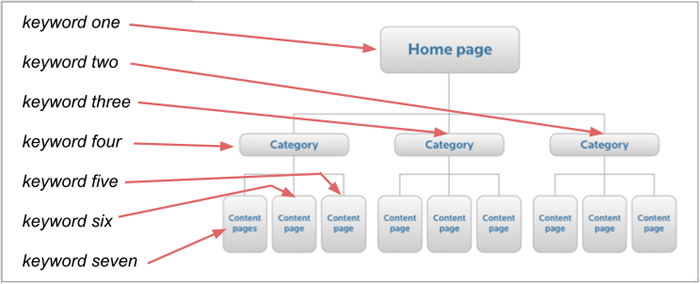
Digital Marketing Channels: What Are They
The digital online space is constantly changing. Marketers are recognizing that it has become very competitive, partly due to technological disruptions, demanding customers, and changing shopping behavior. Businesses with limited digital marketing channels that are unable to adapt and respond to these challenges quickly will find it challenging to survive.
Digital Marketing Channels: What They Are, How To Choose Them And Which Ones Work Best For Your Business
Learning about various marketing channels and how to use them within your strategy will ensure your business stays competitive online. It will help you reach new customer segments, increase operational efficiency and maintain a consistent marketing message across all your channels.
The best way to do this is to develop your omni-channel strategy that focuses on connecting all of a company’s touchpoints, such as a physical store, social media, website, email, and mobile. The aim is to enable customers to move seamlessly between channels until they complete their journey and purchase from you.
In this article I’m going to explain what digital marketing channels are, why you should be using an omni-channel marketing strategy and tips to help your marketing strategy succeed.
Types of digital marketing channels.
Digital channels include websites, social media, email, mobile apps, and other online tools that allow people to connect with businesses. Each has its own strengths and weaknesses, so choosing the right one for your business will depend on your goals and budget.
It’s impossible to be active in every marketing channel. So you have to select the ones that make the most sense for your business. And in order to do that, you’ll need to understand the platforms that you have access to and how they might benefit you. As a marketer, you’ll need to go where your customer is. Don’t just dismiss a channel because it’s small though. You’ll also want to consider what mindset your customer is in when interacting with that channel.
For example, if you sell off-roading car parts, you will need to invest in channels completely different to a local restaurant. For example, off-roading enthusiasts might be more interested in watching a 30-minute product demo on YouTube, yet this would be less suitable for a restaurant. It is tempting to pursue a channel just because it’s trendy, but don’t let yourself be persuaded to over-invest in digital channels that do not fit your buyer’s persona. Above all, you need to ensure your message lands with the right audience on a platform they are spending time on.

What is omni channel marketing?
An omnichannel strategy focuses on connecting all of a company’s touchpoints, such as brick-and-mortar shops, social, website, email, and mobile. This enables customers to move seamlessly between these channels without encountering any dead ends. This not only improves the customer experience and provides more channels for a customer to purchase but also allows consumers to start and complete purchases on different channels at their own convenience.
This holistic marketing strategy is different from a multi-channel strategy, where the various touch points operate in silos. For many consumers, an omnichannel strategy isn’t even negotiable, as 40% of customers say that they won’t do business with companies if they can’t use their preferred channels.
Omnichannel marketing examples
An example of an omnichannel marketing strategy for retail stores could start where their customer hears about them from google search ads, they proceed to research the item on social media, search on their website to see if there is stock available in a store, and reserve it online to then proceed to pick it up from the nearest store location. This seamless flow creates a better purchasing journey for customers.
Why should you have an omni-channel marketing strategy?
Omni-channels marketing allow Customers to Buy From You Anytime, Anywhere, And On Any Device. Using an Omni-channel strategy will help businesses build stronger relationships with customers by providing them with more ways to connect with each other. It also gives companies the opportunity to provide personalized customer experiences.
Omni-channel marketing means that your business has access to every customer at any given moment. Customers expect to find your company information and products quickly and they want the information in all the channels they use to research business options. For many consumers, an omnichannel strategy isn’t even negotiable, as 40% of customers say that they won’t do business with companies if they can’t use their preferred channels.
They Can Be Tracked Across Multiple Channels. Customers will interact with your brand through different channels, such as social media, email, text messages, phone calls, and more. Each of These interactions allow you to track how people engage with your brand and see which channels buyers are interacting with before they actually make a purchase, so you can better allocate your marketing budget and reduce costs. Take it from me, this is one of the most exciting and fast moving aspects within the Omnichannel marketing world.
Using the strategies I teach in my C.A.M online training, you can bring all your sales channels together and combine the data from your marketing audit, so that you can easily get a strategic view of your marketing efforts and make data driven decisions with your marketing.
Omni channel marketing enables a business to stay competitive. When you combine channels, you’ll gain a significant edge because some competitors only focus on one or two channels to market their brand.

Tips for creating your digital marketing channels
Personal communication is paramount in the current climate, and customers expect businesses to understand their needs and priorities. Any good omnichannel strategy should start with personalising the customer experience by leveraging data through CRM systems and in-store technology.
Utilise actionable information to fine-tune your omnichannel experience. Data is king in the new landscape, and it’s the fuel that drives the personalisation required to create a successful omnichannel strategy. Make sure that you have the right tools to come up with a data-driven strategy.
Customers expect 24/7 service and easily accessible solutions to their problems, so consider using AI and chatbots to handle routine issues promptly.
One of the biggest omnichannel strategy benefits is the wealth of data it puts at a business’s fingertips. Don’t let this data go to waste: use it to find and nurture brand advocates. Read more about digital marketing metrics and the top components of a marketing audit.
Deliver a complete buying experience. People are more likely to complete their purchases if they can get all the information they need directly from the brand they’re buying from. When people need to leave your site to do research, there’s a chance that they never come back. Omnichannel marketing helps you keep customers in contact with your business until they’ve converted.
What are the top 3 digital marketing channels?
Search Engine Optimization (SEO)
If you’re looking to build brand awareness, SEO is the way to go. It’s also the fastest way to get more organic search traffic. SEO is important because over 70% of consumers begin their journeys by using a search engine to discover new products and services, and for consideration and purchasing. That’s why SEO plays a huge role in winning over potential customers during key moments in their buying journey.
The main benefit of SEO is that it strengthens over time and doesn’t turn off. Even though you might lose your budget you can still maintain your Organic Traffic and the customers coming from that channel.
SEO is divided into on-page, off-page, and technical SEO. Good SEO focuses on all three areas; if done properly this will make a site ‘rank’ high in search results.
4 Typical SEO mistakes made and how to avoid them.
- Not Building Backlinks
- Using keywords wrong
- Duplicate content.
- Treating SEO like a one time job
When designing your digital marketing channels and their individual channel strategies, remember your pages rank in search NOT your complete website. Use Google Search Console and do a complete Marketing Audit to ensure your SEO strategy is based on data and not assumptions.
Map out your SEO keywords for each sales page and blog on your website.

Social Media Marketing (SMM)
Both social media marketing and search engine optimization are ways to promote your website and products online. However, there are some key differences between these two methods.
Social media marketing has become an increasingly popular form of advertising. With more than 2 billion users worldwide, Facebook alone has the power to reach millions of people every day.
There isn’t one cookie-cutter social media marketing strategy that will guarantee success. Your strategy will differ depending on your industry and audience. There are, however, specific steps you should follow to build out a plan that has longevity and helps your brand and business grow.
3 Steps to stand out on social media.
1. identify your specific business goals
2. Design a content plan to help create valuable posts that align with those goals
3. Regularly audit and measure your results, and fine-tune your strategy over time
Email Marketing
Email marketing is one of the oldest forms of direct marketing. It’s also one of the least expensive channels to use. You can send out emails to customers, prospects, and even potential employees with ease.
Depending on your business goals, your email marketing will be an important part of your Middle funnel marketing strategy. It is two-fold, on one hand, your efforts will be about acquiring new subscribers to your list, and on the other, you will be using it in retaining and generating revenue from those subscribers.
According to Statista, there are more than 306 billion emails sent every day… yes every day.
Marketers who use segmented email campaigns note as much as 760% increase in revenue.
AND, not surprising, 4 out of 5 marketers would be willing to give up on “high maintenance” social media to concentrate more on email marketing – and it’s no wonder with stats like that.
Your digital marketing channels should include an email marketing strategy
Good email marketing is built on detailed customer segments and because it’s all digital, you can track most interactions within their journey.
- Use your database to build trust and build your business
- Collect important information to help customise your communications.
- Use email marketing for drip campaigns that are automated depending on their interactions with your brand
- Use customisation to strengthen the customer experience and help your email stand out in their inbox.
- Use email remarketing for abandoned carts and develop campaigns that aim to convert the audience by recapturing lost revenue.
- Email is still a wonderful strategy to explore and to dive in deeper, don’t underestimate the power of the email and it’s ability to capture possible lost revenue, re-nurture and bring back old customers.
Remember, by taking advantage of the ability to segment and track.
Your marketing can not only engage and delight people, but by collecting the right information at the right stage in their journey with you, you can now customise and personalise all your email messages.
Summary of marketing channel types
Omnichannel strategy is changing, as it’s no longer just a blueprint for big businesses and billion-dollar brands to follow. Instead, customers around the world are saying they now expect an “Amazon-like” experience when shopping — even from smaller companies. It’s clear that an omnichannel strategy benefits both businesses and customers, but how can companies get started on their digital journey? How can they create an omnichannel strategy that acts as a differentiator in an era of stiff competition without increasing their workload.

